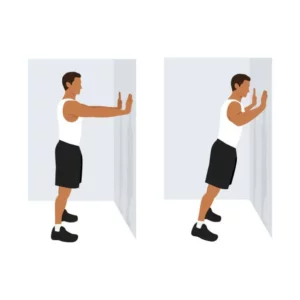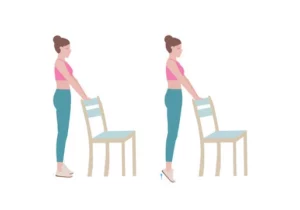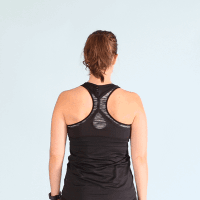Geriatric physical therapy, also known as senior or elder physical therapy, is a specialized branch of healthcare designed to address the unique needs and concerns of older individuals. It recognizes that aging is a natural process but firmly believes that it shouldn’t be synonymous with a decline in health or vitality. In this blog, we’ll explore the world of geriatric physical therapy, uncovering its benefits and how it plays a pivotal role in enhancing the golden years of life.
Contents
Understanding Geriatric Physical Therapy
Geriatric physical therapy, also known as geriatric PT, is a specialized branch of physical therapy focused on assessing and addressing the unique needs and challenges faced by older adults. It aims to enhance the physical function, mobility, and overall quality of life of seniors. Here are key aspects of geriatric physical therapy:
- Assessment: Geriatric physical therapists start by conducting comprehensive assessments to evaluate an older individual’s physical health, mobility, strength, balance, and any specific health conditions or limitations.
- Individualized Treatment: Based on the assessment findings, they design personalized treatment plans tailored to the individual’s needs, goals, and health status.
- Mobility Enhancement: Geriatric PT emphasizes improving and maintaining mobility, including walking, getting up from a chair, climbing stairs, and performing daily activities.
- Strength Training: Geriatric physical therapy incorporates strength training exercises to help seniors regain or maintain muscle strength, which is essential for activities like lifting and carrying objects.
- Joint Health: The therapy may include joint mobilization techniques to improve joint function and reduce stiffness and pain.
- Cardiovascular Health: Some geriatric PT programs include cardiovascular exercises to maintain heart health and stamina.
- Education: Geriatric physical therapists educate seniors and their families about proper body mechanics, home exercises, and lifestyle choices that promote health and independence.
- Functional Independence: The ultimate goal of geriatric PT is to enhance an older adult’s ability to perform daily activities independently and safely, allowing them to age with dignity and confidence.
Role Of Geriatric Physical Therapy
The role of geriatric physical therapy is crucial in promoting the health, mobility, and overall well-being of older adults. Here are key aspects of its role:
- Optimizing Mobility: Geriatric physical therapy focuses on enhancing and maintaining mobility, balance, and strength in older individuals. This helps seniors maintain their independence and perform daily activities with ease.
- Fall Prevention: Falls are a significant concern for seniors. Geriatric physical therapists work on fall prevention strategies, including exercises to improve balance and coordination, reducing the risk of falls and related injuries.
- Pain Management: Many older adults experience chronic pain conditions. Physical therapists employ various techniques, such as manual therapy and exercises, to alleviate pain and improve comfort.
- Post-Surgery Rehabilitation: Geriatric PT plays a crucial role in post-surgery rehabilitation, helping seniors recover from joint replacements, orthopedic surgeries, and other medical procedures.
- Chronic Disease Management: Seniors often deal with chronic conditions like arthritis, osteoporosis, and cardiovascular issues. Physical therapy can help manage these conditions, improving the quality of life for older individuals.
- Enhancing Independence: Geriatric physical therapy aims to promote independence in activities of daily living (ADLs). This is done by teaching techniques and providing tools to make daily tasks more manageable.
- Cognitive Function: Some geriatric physical therapists incorporate cognitive exercises and activities into their sessions to support brain health and mental agility.
- Customized Care: Every older adult has unique needs and health challenges. Geriatric physical therapists tailor treatment plans to the individual, considering their specific goals and limitations.
- Educating and Empowering: Geriatric physical therapists educate seniors and their caregivers about the importance of exercise, nutrition, and lifestyle choices that contribute to a healthier, more active life.
- Preventing Decline: Through regular physical therapy sessions, seniors can slow the natural decline in physical function associated with aging, maintaining a higher level of wellness.
Tips For Long-Term Senior Health
Maintaining long-term senior health is a multifaceted endeavor that involves various aspects of physical, mental, and emotional well-being. Here are some essential tips for seniors to promote their overall health and quality of life as they age:
- Stay Physically Active: Engage in regular physical activity to maintain strength and balance. Activities like walking, swimming, or yoga can be effective ways to stay active.
- Eat a Balanced Diet: Consume a well-rounded diet rich in fruits, vegetables, proteins, and healthy fats. Adequate nutrition is essential for maintaining energy levels and supporting overall health.
- Stay Hydrated: Dehydration can exacerbate health issues and lead to complications, so it’s essential to keep fluid intake in check.
- Medication Management: If you have prescription medications, take them as directed and discuss any side effects with your healthcare provider. Keep an updated list of your medications for easy reference.
- Fall Prevention: Create a safe home environment by removing tripping hazards, installing handrails, and using non-slip mats. Additionally, consider balance and strength exercises to reduce the risk of falls.
- Mental Stimulation: Engage in activities that challenge your mind, such as reading, puzzles, or learning a new skill. Mental stimulation can help maintain cognitive function.
- Social Interaction: Stay connected with friends and family, as social interaction is essential for mental and emotional well-being. Join clubs, volunteer, and events to maintain an active social life.
- Manage Stress: Practice stress-reduction techniques such as meditation, deep breathing, or mindfulness to manage stress and promote relaxation.
- Quality Sleep: Aim for seven to nine hours of quality sleep per night. Maintain a regular sleep schedule and create a comfortable sleep environment.
- Limit Alcohol and Tobacco: If you drink alcohol, do so in moderation, and if you smoke, consider quitting or seeking support to quit. Both alcohol and tobacco can have detrimental effects on health.
Exercises For Older Adults
Exercise is a crucial component of geriatric care as it helps maintain physical health, flexibility, and independence. However, it’s essential to choose exercises that are safe and appropriate for an individual’s age and physical condition. Here are some exercises suitable for geriatric care:
Seated Leg Lifts
- Sit comfortably in a sturdy chair with your feet flat on the floor.
- Keeping your back straight and core engaged, lift one leg straight out in front of you.
- Hold for a few seconds, then lower it back down.
- Repeat for 10-15 repetitions on each leg.
Wall Push-Ups
- Stand facing a wall, about arm’s length away.
- Place your palms flat against the wall at shoulder height.
- Lean forward and push your body towards the wall, then push back to the starting position.
- Perform 10-15 repetitions.
Seated Marches
- Sit in a chair with your feet flat on the floor.
- Lift one knee as high as you comfortably can then lower it.
- Repeat with the other leg.
- Perform 10-15 marches on each leg.
Standing Calf Raises
- Stand behind a sturdy chair or use a countertop for support.
- Lift both heels off the ground as high as you can, then lower them back down.
- Perform 10-15 repetitions.
Shoulder Blade Squeezes
- Sit or stand with your back straight.
- Squeeze your shoulder blades together as if you’re trying to hold a pencil between them.
- Hold for a few seconds, then release.
- Repeat for 10-15 repetitions.
Leg Raises (with support)
- Hold onto a sturdy surface like a countertop or the back of a chair for support.
- Stand on one leg and lift the other leg to the side, keeping it straight.
- Lower it back down, and repeat on the other leg.
- Perform 10-15 raises on each leg.
Neck Tilt Stretch
- Sit or stand with your back straight.
- Slowly tilt your head to one side, bringing your ear toward your shoulder.
- Hold the stretch for 15-30 seconds, then switch to the other side.
- Repeat a few times on each side.
Seated Twist
- Sit with your feet flat on the floor.
- Twist your upper body to one side, using the back of the chair for support.
- Hold for a few seconds, then twist to the other side.
- Repeat for 10-15 twists on each side.
Conclusion
In conclusion, geriatric physical therapy plays a crucial role in enhancing the quality of life for our senior population. As we age, maintaining mobility, strength, and flexibility becomes increasingly important to stay independent and enjoy daily activities. Geriatric physical therapy offers tailored exercises and interventions designed to address age-related issues, manage chronic conditions, and prevent further health complications.
By working with a physical therapist, seniors can experience improved balance, reduced pain, increased energy levels, and a higher degree of overall well-being.
Physical Therapy helps patients recover from pain. If you’re experiencing Back, Shoulder, Knee, Neck, Elbow, Hip, or Arthritis pain, a physical therapist at PhysioMantra can help: Book an online physical therapy session.














